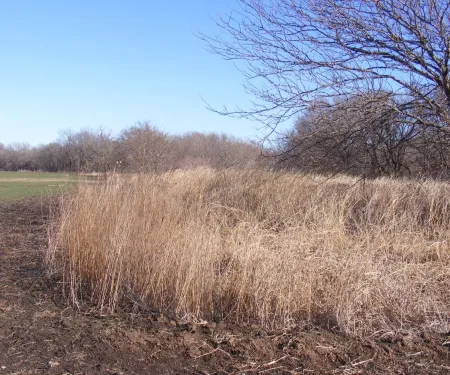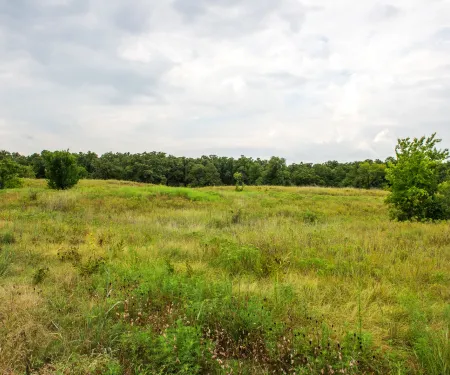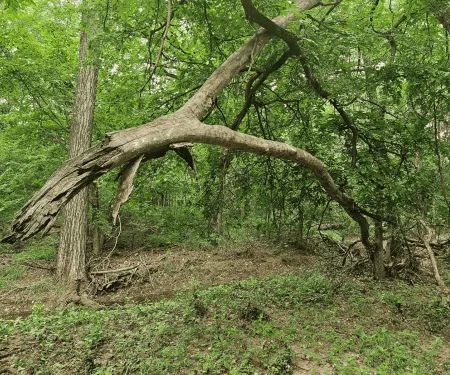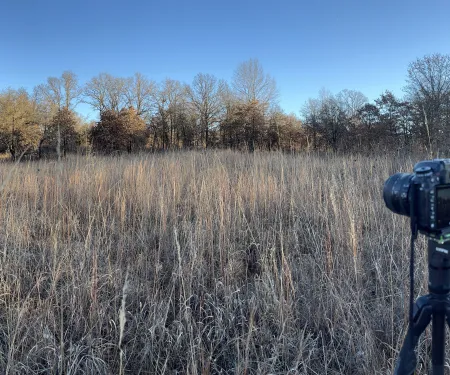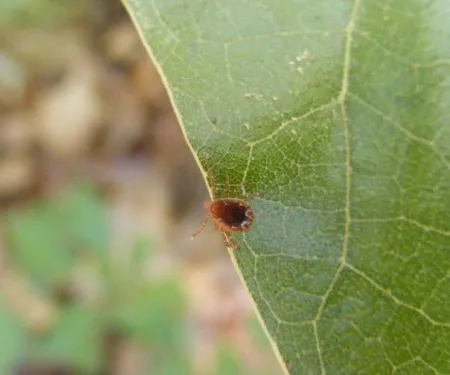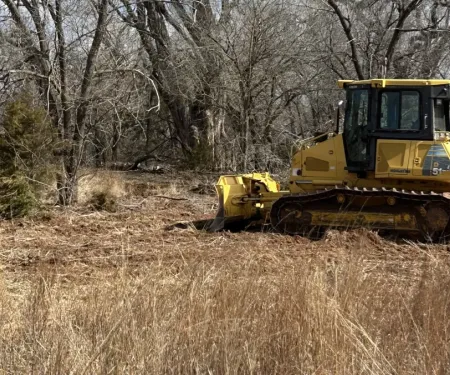Beauty Is In The Eye Of The Occupant
When I’m out talking to landowners, there is one phrase I hear quite often. “This place will look a whole lot better when I get it cleaned up.” Sometimes they are right; but often, when it comes to improvements for wildlife, they are mistaken.
Strategies for Deer Management on Private Lands
White-tailed deer are Oklahoma’s most popular game animal, and recent harvest numbers show their strong presence across the state. With record antlerless harvests and a mix of public and private land hunting opportunities, landowners play a vital role in sustaining healthy deer populations.
Widowmakers: Hazardous Habitat
Oklahoma’s forests are full of hidden hazards after severe weather. Learn what “widowmakers” are, why they matter, and how spotting and safely removing them can keep you — and your property — out of harm’s way.
Using a Photo Point to Monitor a Year’s Growth
We visited a Lexington WMA photo point every month in 2024 to track the before and after views of a prescribed fire.
Boost Turkey & Quail with Early Successional Management
Do you see turkey or quail on your property during certain months of the year but not all? There’s something going on, but what? Sometimes the answer can be complex; other times the solution is simple. For some, early successional management may be the key.
How Grazing Can Benefit Quail
Oklahoma has a long and storied history of being one of the leading states in beef cattle production, as well as being one of the leading states in numbers of bobwhite quail. And when applied correctly as a habitat management tool, the cow can greatly benefit the quail while benefitting herself and her owner’s bottom line.
Tiny Plant Makes for a Big Discovery
An avid naturalist discovered a federally threatened plant with the nickname “Tiny Tim” growing in Oklahoma for the first time.
Backyard Bird Habitat
With just a few minor tweaks to your gardening plans throughout the year, you can cultivate a welcoming winter backyard bird habitat.
Prescribed Burning as a Tool Against Ticks?
The benefits of prescribed burning for wildlife have been well documented, especially when managing for white-tailed deer, wild turkey, and bobwhite quail. Even more, prescribed burning continues to be one of the most cost-effective wildlife management tools available to land managers. The question is, can prescribed burning help to control tick infestations too?
2024 Landowner Conservationist of the Year
Farmer-rancher Randy Malson of Roger Mills County was named the Oklahoma Department of Wildlife Conservation’s 2024 Landowner Conservationist of the Year.
